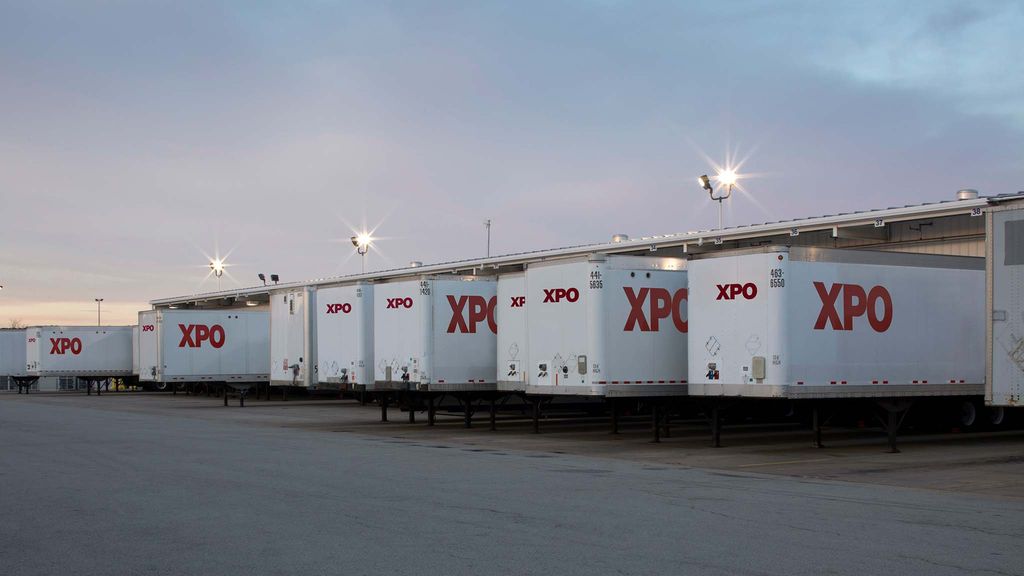5 Paper and Packaging Products LTL Shipping Tips
Many paper, print and packaging companies today struggle to procure the types of paper stock they need when they need it, and in the quantities they need to fulfill their customer orders. The days of paper distributors stockpiling inventories at their own expense are over, resulting in inventory shortages and long lead times that have become the norm for buyers. With this in mind, the following issues should be considered when choosing an LTL carrier to ship your paper and packaging products.
Get the latest news and updates on XPO
On-time service performance
To help alleviate material shortages and extended lead times for your customers, integrate a reliable LTL carrier into your supply chain. Your paper, print and packaging shipments will be more responsive to your customers’ deadlines and avoid causing production line shutdowns. An LTL carrier with a high level of performance and flexible service options can make a big difference.
Find out whether the carrier you’re considering offers delivery options that support just-in-time (JIT) deadlines and will give your shipments high priority with on-time deliveries. Many LTL carriers offer a day-definite guaranteed delivery service, and some offer guaranteed delivery by noon, including a money-back guarantee if the shipment doesn’t meet the agreed transit time. The more reliable the carrier, the more peace of mind you’ll have, and the happier your customers will be.
Another service option for JIT deliveries is time-date-critical service that ensures your shipments arrive on the day and within the time window you select. This is particularly beneficial if you’re shipping to a warehouse or large distribution center with limited dock hours. And finally, you’ll want your LTL carrier to be capable of providing flexible, after-hours pickup service. Sometimes a shipment absolutely needs to be picked up after normal business hours; this service can be key to maintaining efficient dock flows and meeting your customers’ needs.
Damage-free services
Be sure to package your paper, print and packaging products in secure containers, and follow proper labeling and strapping requirements. These are your responsibilities, and together with the carrier’s rigorous loading, unloading and handling protocols, they’re critical to preventing tears and punctures. Proper packaging also protects against humidity, dust and debris that can impact the integrity of your shipments.
Some LTL carriers, like XPO, have a system of decking and strapping inside the trailers to further secure the freight and limit shifting during transit. This is an important offering you should consider when evaluating carriers. By doing everything you can from the outset to reduce damages and exceptions with your paper, print and packaging shipments, you’ll help ensure on-time, intact deliveries, minimizing costly disruptions to your supply chain.
Flexible delivery options
As mentioned earlier, flexibility is important when selecting an LTL carrier to ship your paper, print and packaging materials. Ask the carrier if they offer custom services — for example, inside delivery, residential delivery and liftgate services, all of which may be needed when picking up or delivering to facilities without a dock or dedicated warehouse staff.
Another valuable service that’s optional for shippers is freeze protection. Cold weather typically results in either very dry conditions or frozen precipitation. Very dry conditions can lead to brittle materials prone to breakage, while excess humidity and moisture can result in softened materials that tear easily and reduce the viability of machine-fed materials. An ability to customize the shipping experience could benefit your company and your customers.
Cross-border shipping
If you ship cross-border between the United States, Canada and Mexico, you’ll need an experienced carrier with expert knowledge of customs processes. Some LTL carriers offer their own customs broker service, which can be very convenient if you’re an infrequent cross-border shipper. Using the carrier’s broker may help minimize delays caused from the customs documentation requirements at the border. If you use your own broker, you’ll want to choose a carrier that has a track record of working well with brokers and communicates effectively with them.
Also ask the carrier how many border crossings they make and where your freight will cross, to determine whether that’s the most efficient routing. Do their drivers have experience with cross-border processes? Will their customer service team assist you with your paperwork? Be sure to ask potential carriers about these services to determine whether they suit your needs.
Choose to ship with confidence
Choose an LTL carrier that you can feel confident about every time you ship — one you can rely on for on-time deliveries of just-in-time shipments, flexible service options to customize the shipping experience and cross-border expertise if your supply chain requires it. These are all key capabilities to consider. At XPO, the national coverage, competitive transit times and damage-free service we offer are an excellent value. Learn more about XPO by visiting xpo.com.
Further Reading


